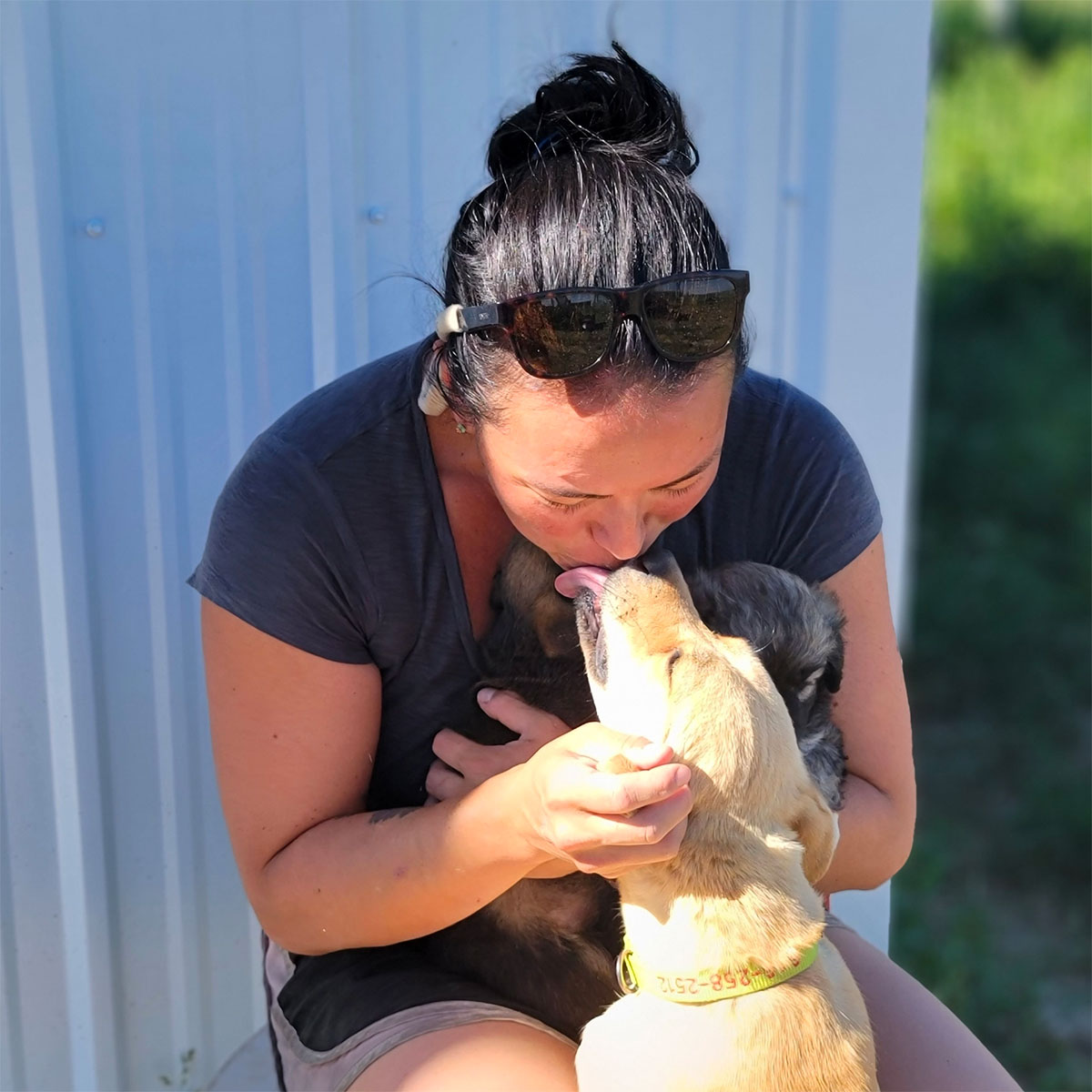Is Your Dog Trying to Talk to You?

Yes! Your dog is trying to talk to you! Dogs are communicating with us, or attempting to, all the time. The trouble is dogs don’t have the ability to talk, so they use body language and behavior to express their feelings. It’s up to humans to pay attention and listen.
It’s important for you to learn to communicate with your dog, your friends’ dogs, your family members’ dogs, your neighbors’ dogs, and unknown dogs because understanding dog communication helps us predict behavior, which keeps humans and dogs safe. When you take the time to interpret a dog’s behavior, you create a relationship built on trust and meeting their needs. Isn’t that what we’re all looking for in relationships?
To start learning your dog’s communication behaviors, begin by observing your dog in a resting state. When your dog is happy and relaxed, what does their mouth look like? What do their eyes do? What shape are their eyebrows? How do they hold their ears? What position or stance does your dog sit/stand in? For example, when happy and relaxed, a golden retriever holds their mouth open in a smile. Their eyebrows bounce around with their eyes that look around the room at people who might give them a treat. Their ears are dangling and soft. They sit on their bum with their tail wagging behind them.
Now, start to observe your dog’s behavior when something exciting is happening such as a package is delivered to your front door. Your dog might stand up and freeze or run towards the door and sit down. Perhaps they close their mouth, clench their jaw, and make a low growling sound. They might stare at the door with pinched eyebrows. You might notice their ears lifted and open to hear better. Perhaps they hold their body and their tail very still. It’s important to know these initial stress signals so you can mitigate the dog’s nerves and move them to a safe, comfortable place.
Then, observe your dog’s behavior when something stressful is about to happen such as a stroller coming down the sidewalk towards them. Dogs have a spectrum of discomfort and stress signs to communicate with you they aren’t feeling great about something that’s about to happen or is already happening. Some stress signs include sniffing the ground, licking their lips, yawning, turning away, showing a lot of white in the eye, shaking off, and freezing. Many of these are ‘normal’ behaviors for a relaxed and happy dog, but when seen out of context, these behaviors indicate anxiety. For example, a dog licking their lips after a tasty treat wouldn’t indicate nervousness, but a dog licking their lips at the sight of a stroller is likely due to concern. Your job, as their advocate, is to ease the dog’s nerves by crossing the street or stepping off the sidewalk until the stroller passes by.
They say dogs speak, but only to those who know how to listen, and that’s true! Once you start to recognize canine stress signs, you’ll start to ‘hear’ dogs everywhere telling you if they’re uncomfortable. When you see a dog exhibit stress signs, they’re telling you they’re nervous and first and foremost, you should help the dog out of the stressful situation. Once you understand the dog’s behaviors, you can then make a plan to address the dog’s fear whether that’s through training or management. With your own pet, your best bet is to enlist the help of a well-qualified dog behavior specialist who uses force-free positive-reinforcement methods based on science. We recommend you attend Aska’s Animals free Dog Behavior Workshop or reach out to Krissi Goetz at JH Positive Training.



